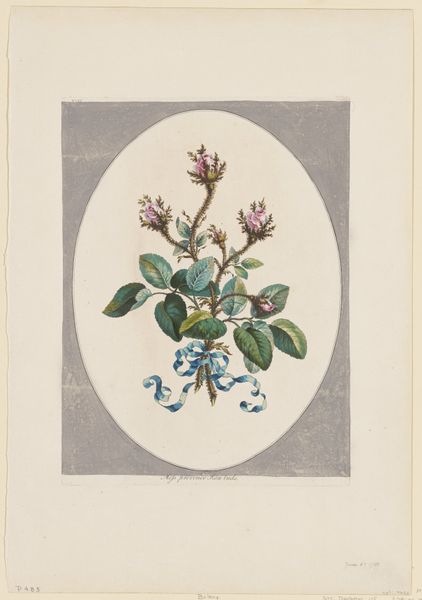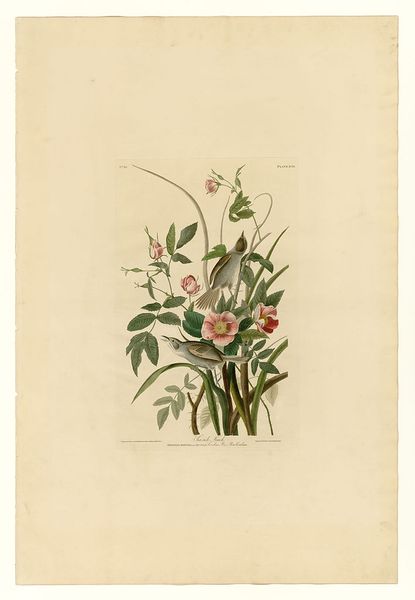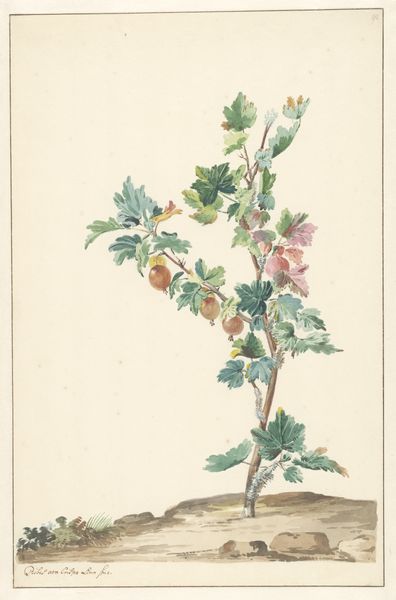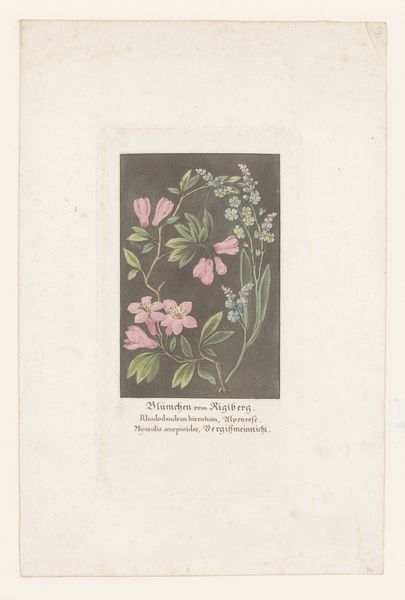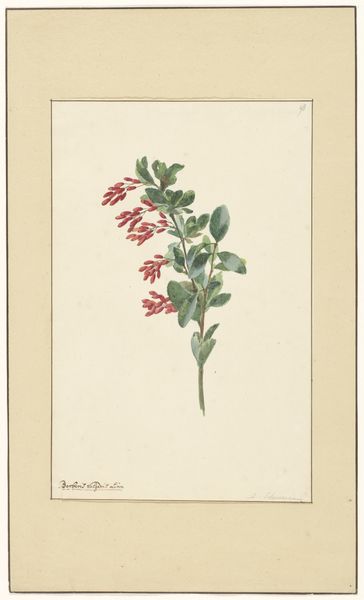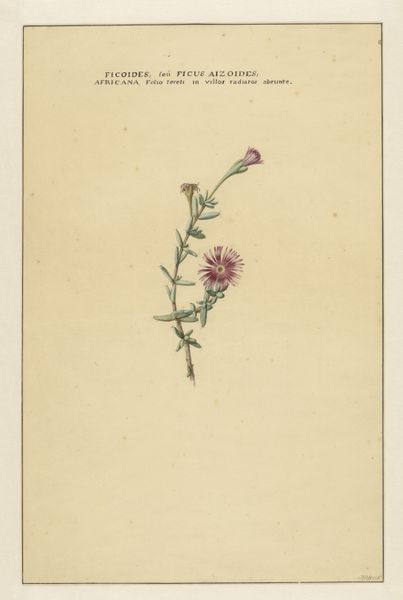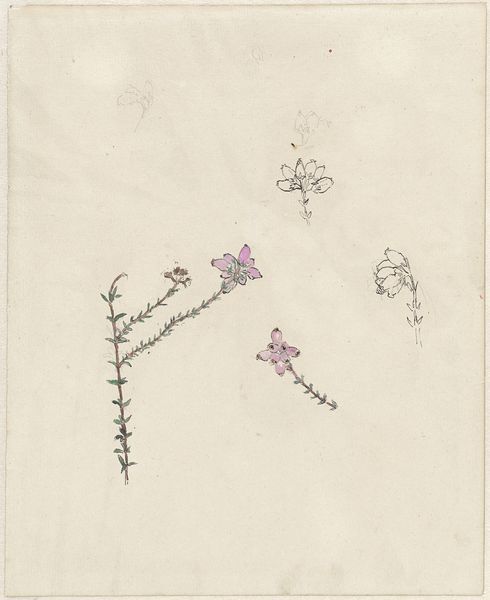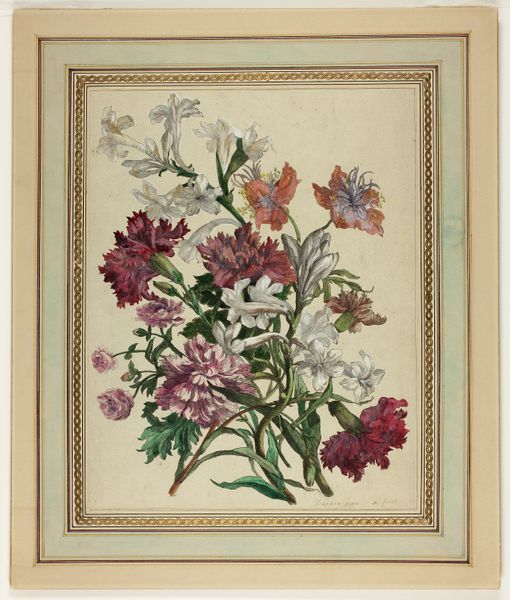
drawing, watercolor
#
drawing
#
landscape
#
watercolor
#
romanticism
#
watercolour illustration
#
natural palette
#
botanical art
#
watercolor
Dimensions: height 189 mm, width 132 mm
Copyright: Rijks Museum: Open Domain
Curator: Let's spend a moment with this exquisite watercolor and ink drawing, “Rimpelroos?", attributed to Eelke Jelles Eelkema, and created sometime between 1815 and 1830. What’s your first impression? Editor: Delicate, isn’t it? It feels like stumbling upon a pressed flower collection in an old journal. There’s a quietude, almost melancholic, about the drooping blossom at the top. Curator: The work showcases a fascination with the natural world, typical of Romanticism. It invites a kind of reverie and intimacy, capturing ephemeral beauty through meticulously observed botanical forms. Consider how floral symbolism gained significance at this time. Editor: Absolutely. Flowers become little storytellers. That rimpelroos – the "wrinkled rose" if my Dutch serves me right—paired with those bursting red buds below... It almost reads as a meditation on aging, doesn't it? Bloom and potential contained in one frame. Curator: The wrinkled rose is evocative. Roses, across cultures, have signified love, secrecy, even mortality. Here, its slightly withered form doesn't diminish its allure, perhaps hinting at a love tested by time. Note the precise yet gentle application of watercolors, capturing subtle gradations of color, giving the composition scientific accuracy yet emotive power. Editor: It’s funny, isn't it? That pursuit of objective realism blended with all this yearning for deeper meaning. The Romantic artists really wanted to have their cake and eat it too. I almost imagine someone carefully arranging these specimens, trying to distil some kind of personal truth through their study. Curator: Precisely. It mirrors the period's desire to find deeper meaning in nature itself. The individual wasn't just documenting; he was trying to feel and express the sublime. Thank you for offering such an engaging view of this work. Editor: My pleasure! Now, if only it smelled as lovely as it looks... That old paper scent has its own peculiar poetry, I suppose.
Comments
No comments
Be the first to comment and join the conversation on the ultimate creative platform.
